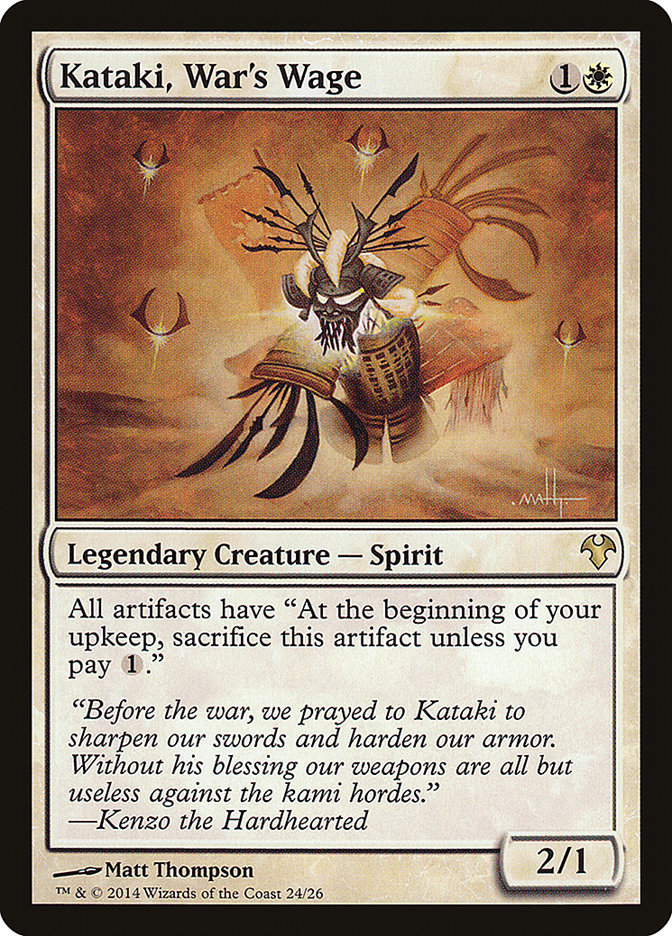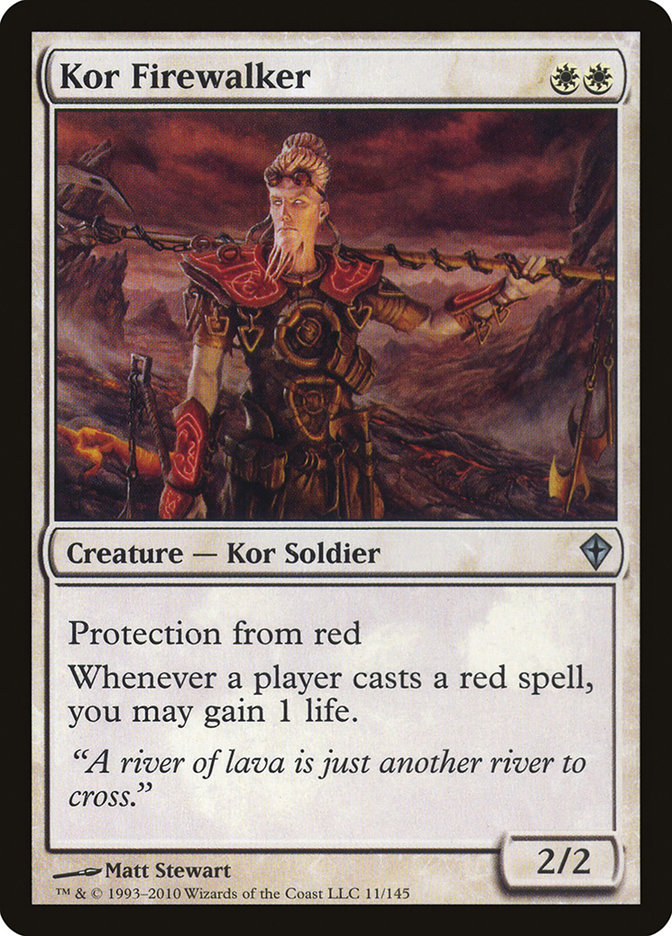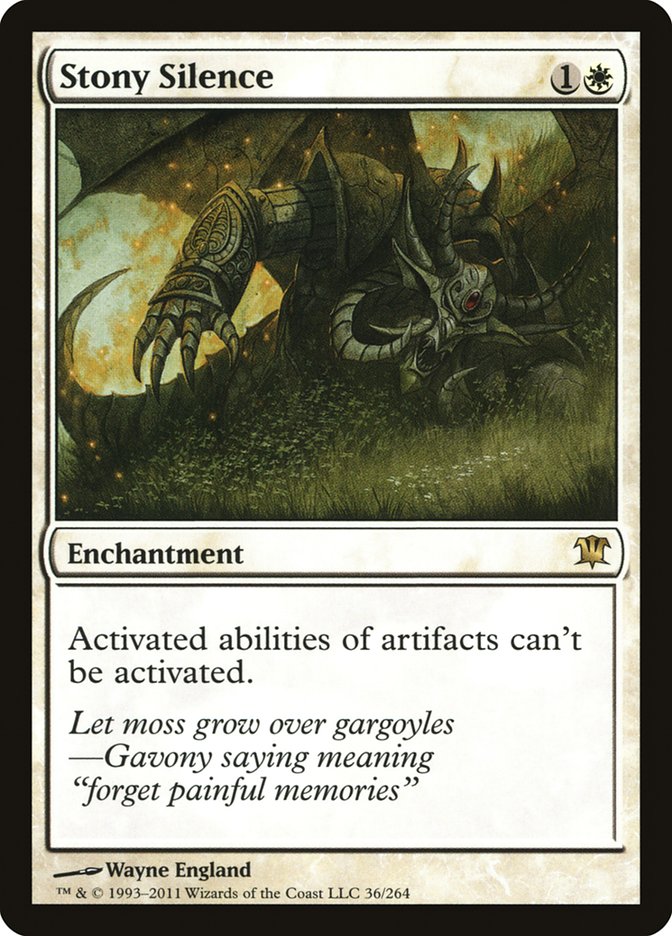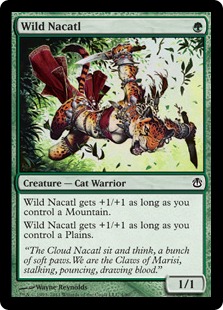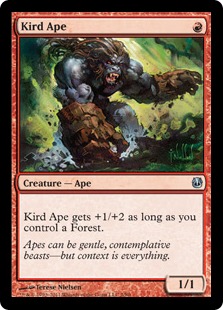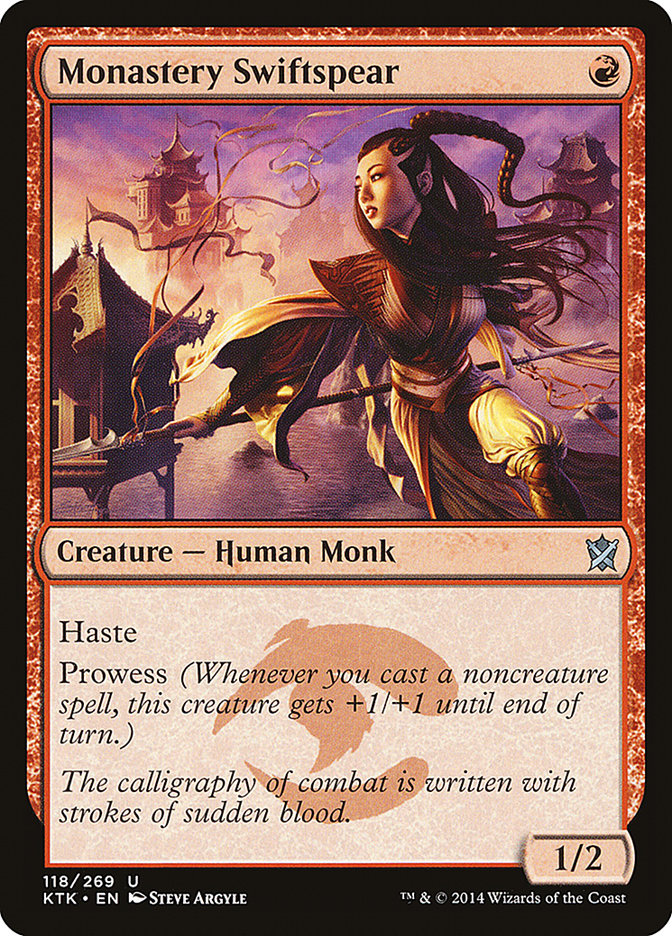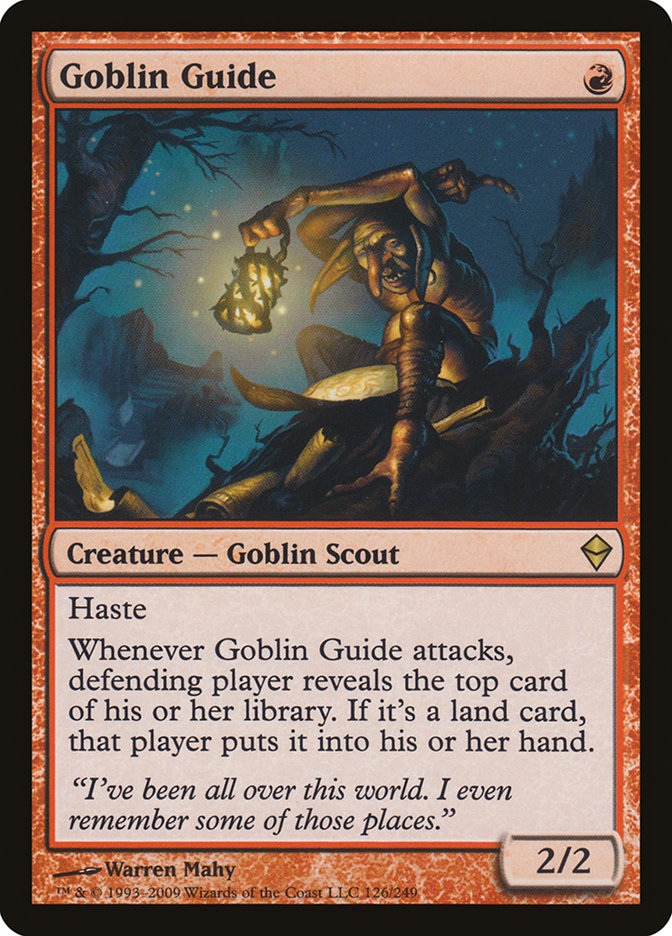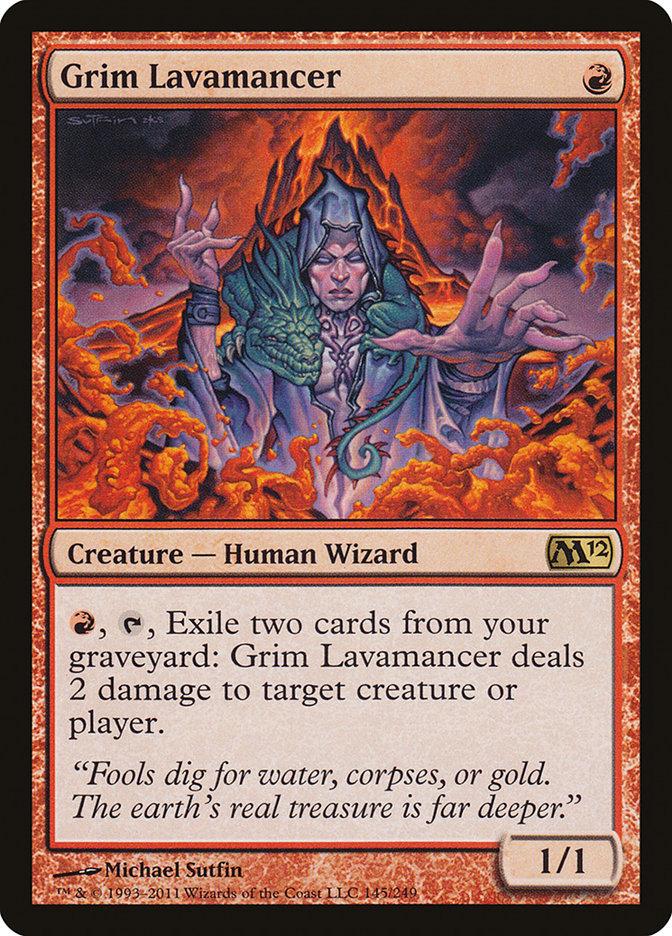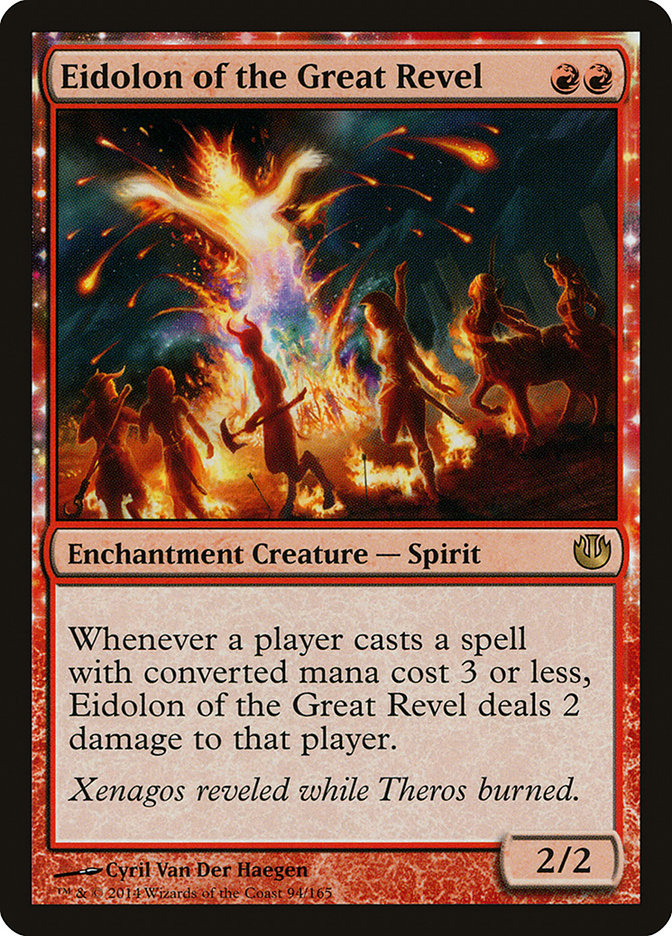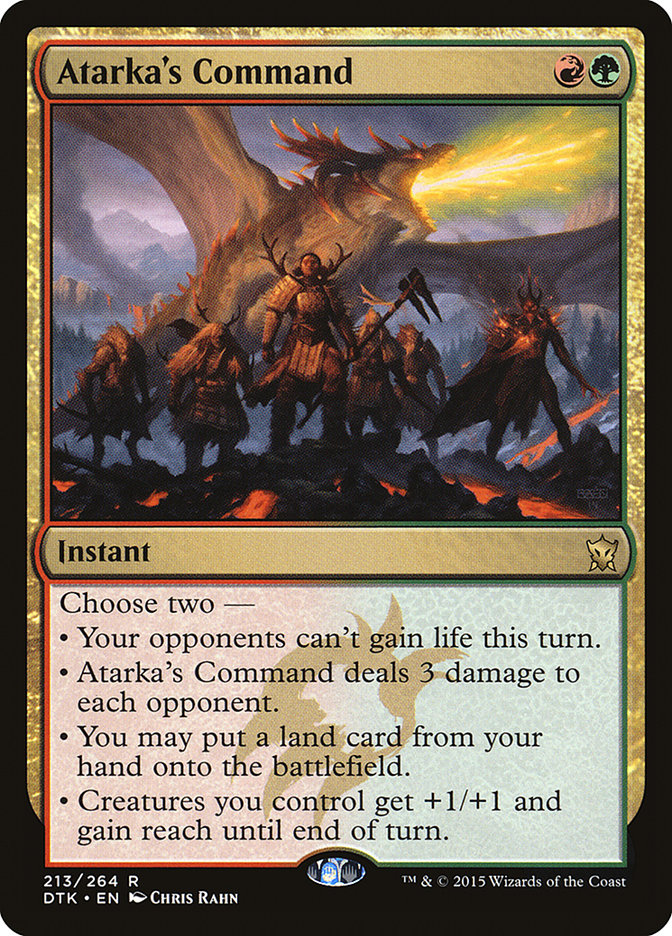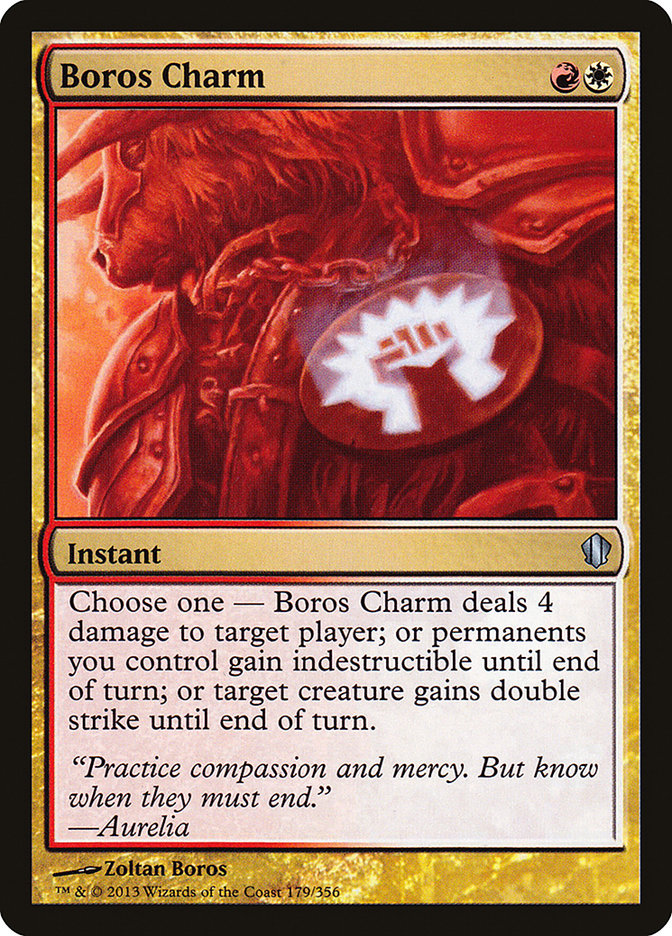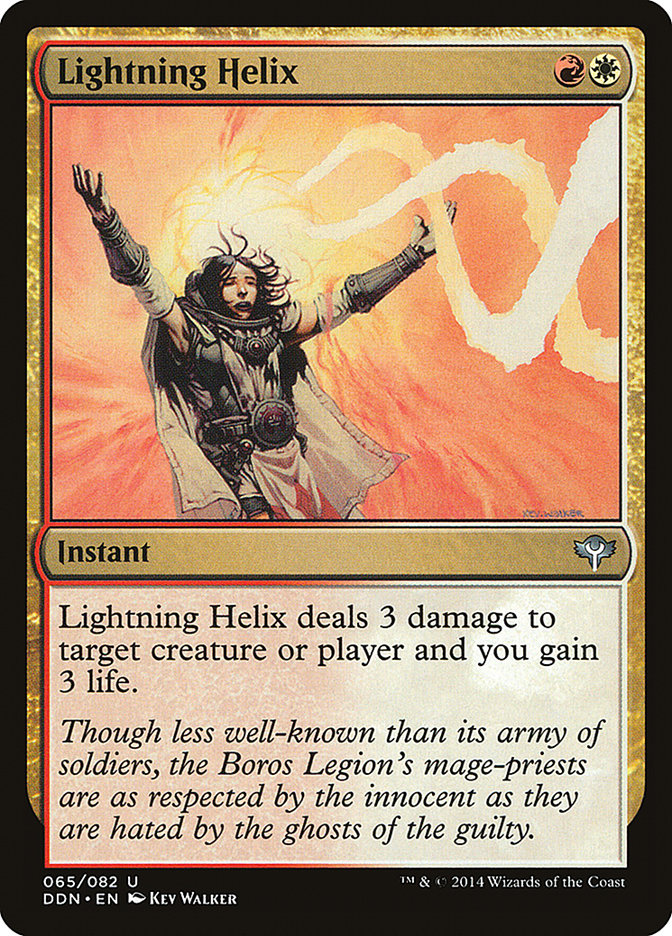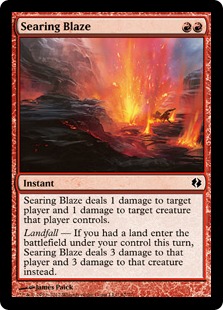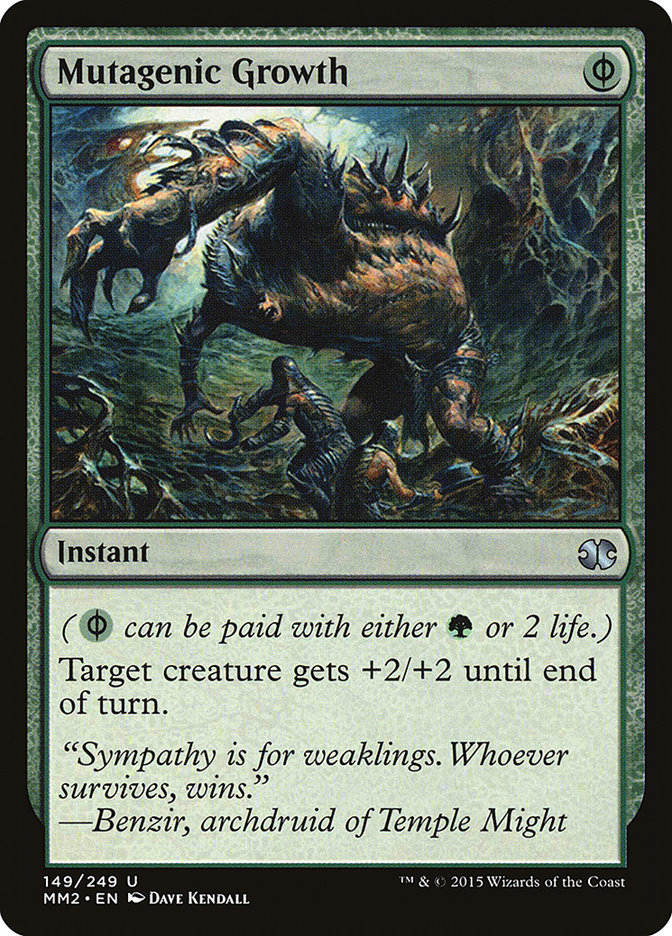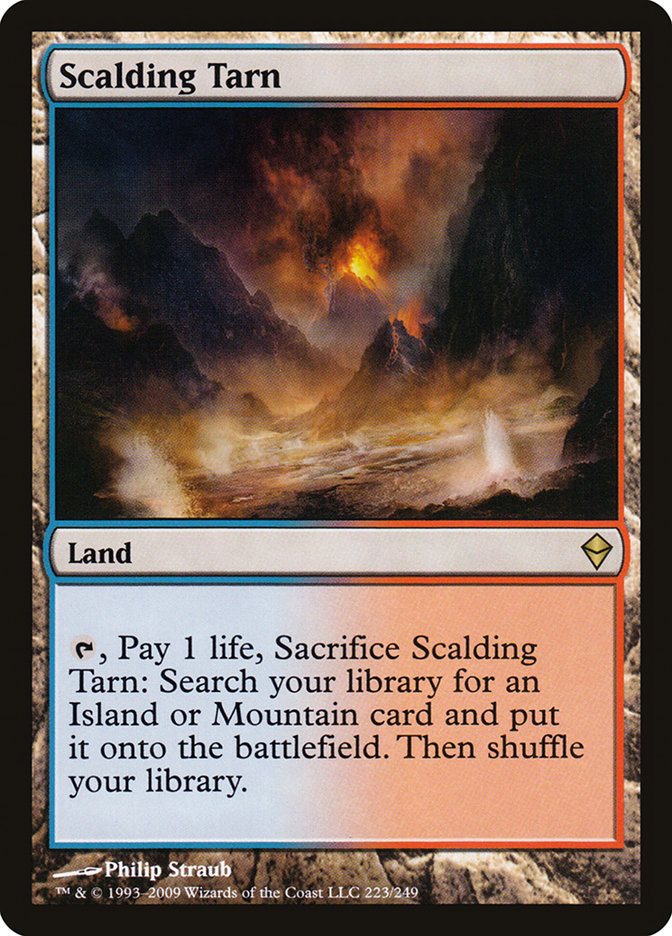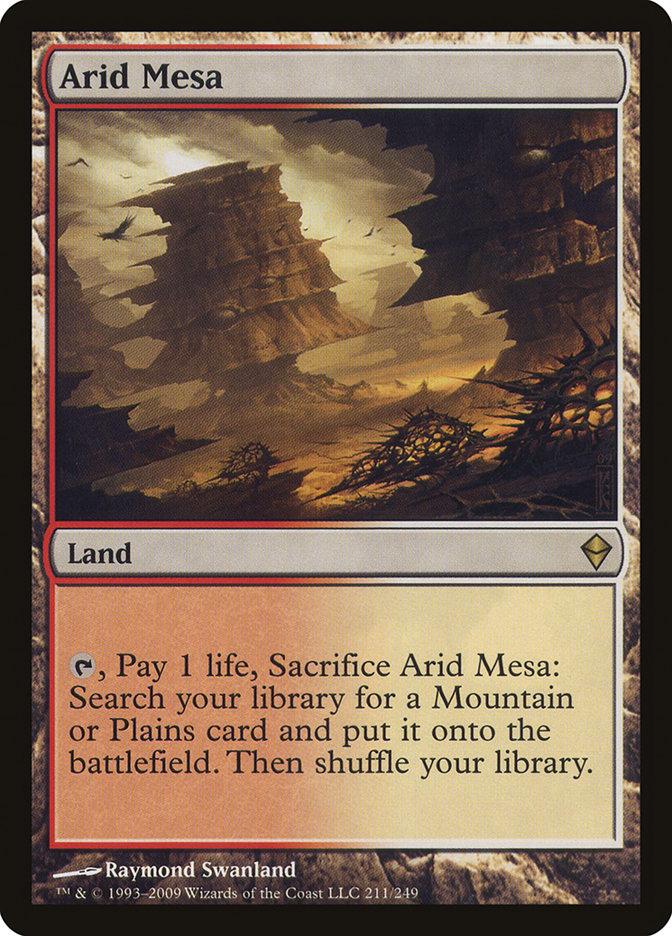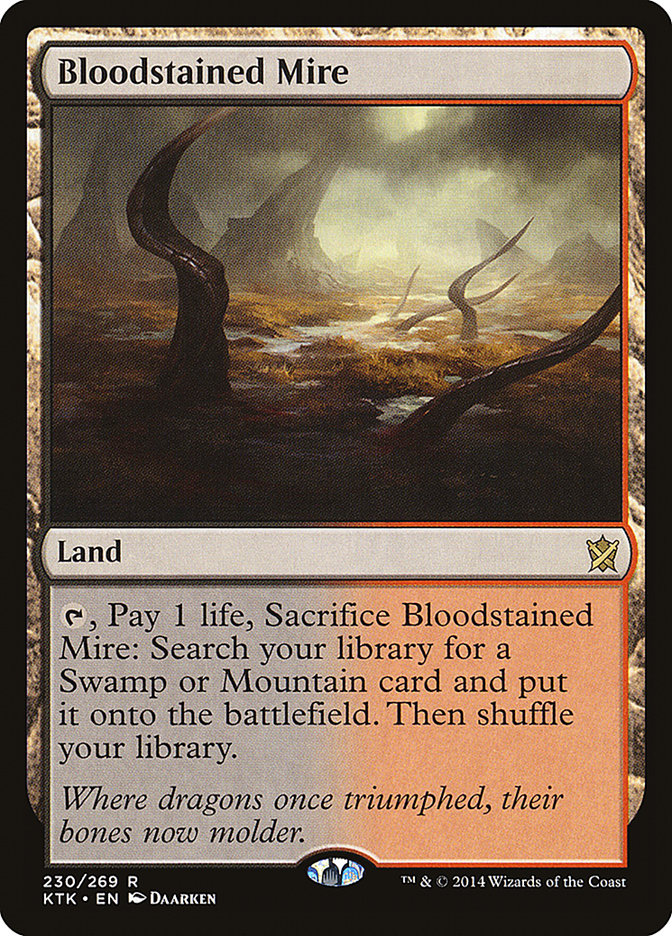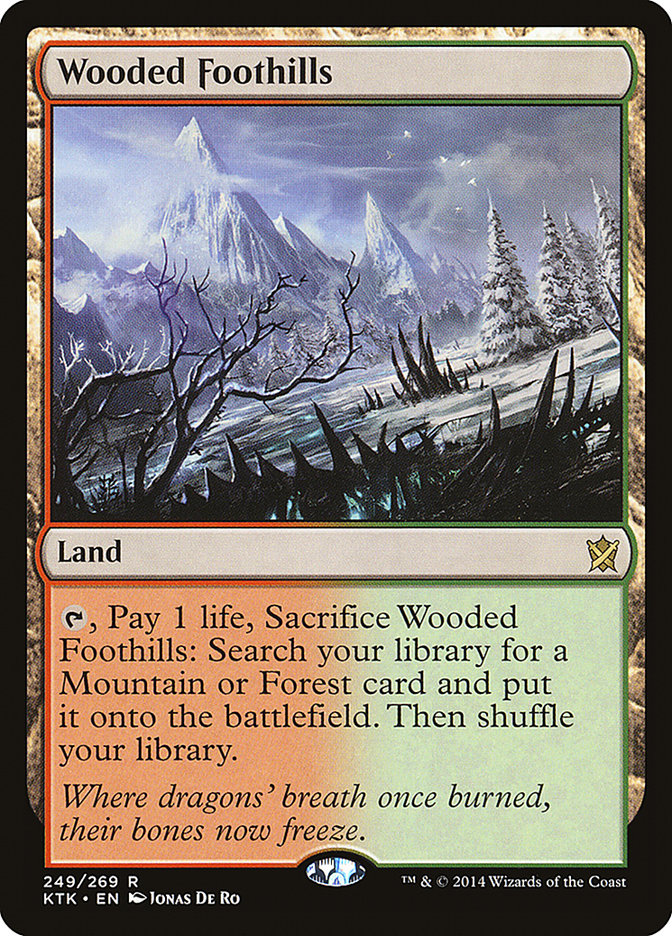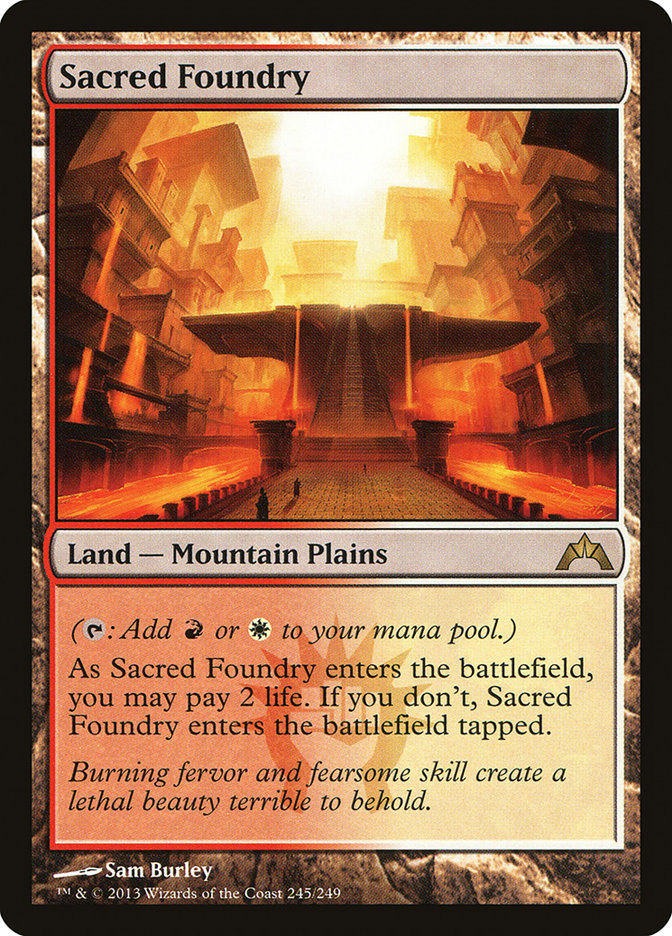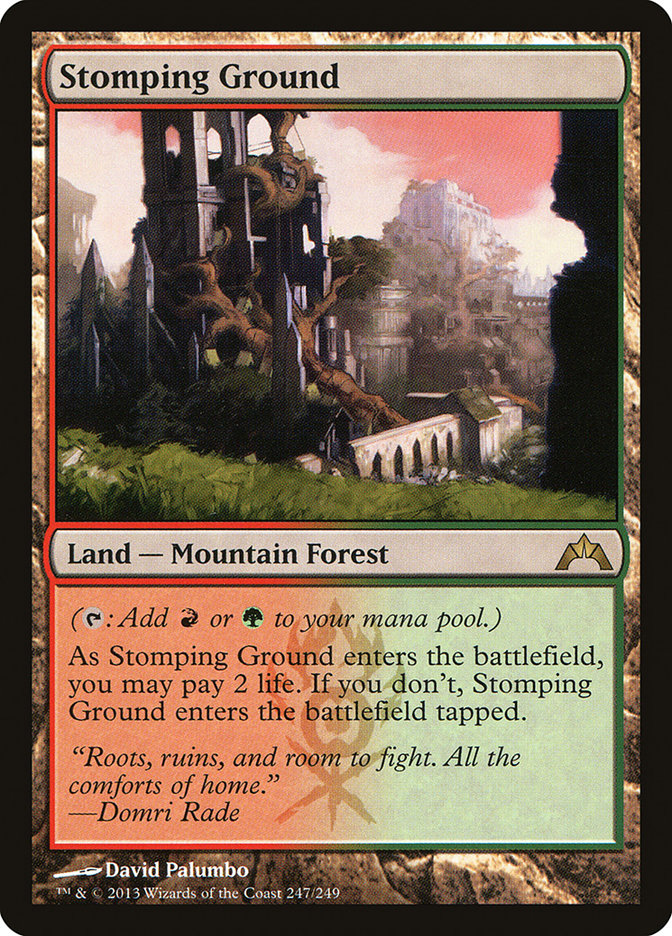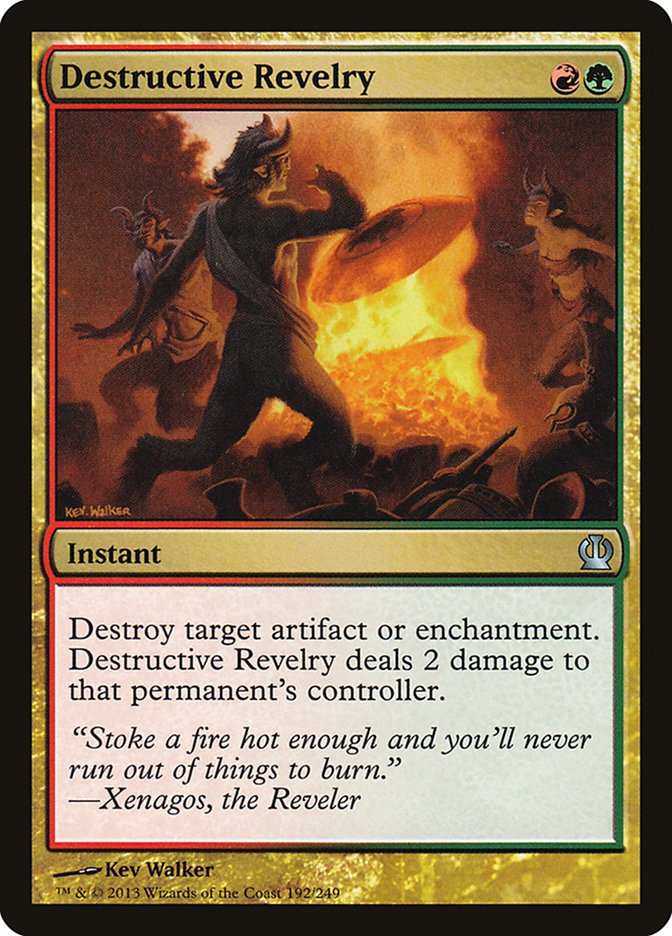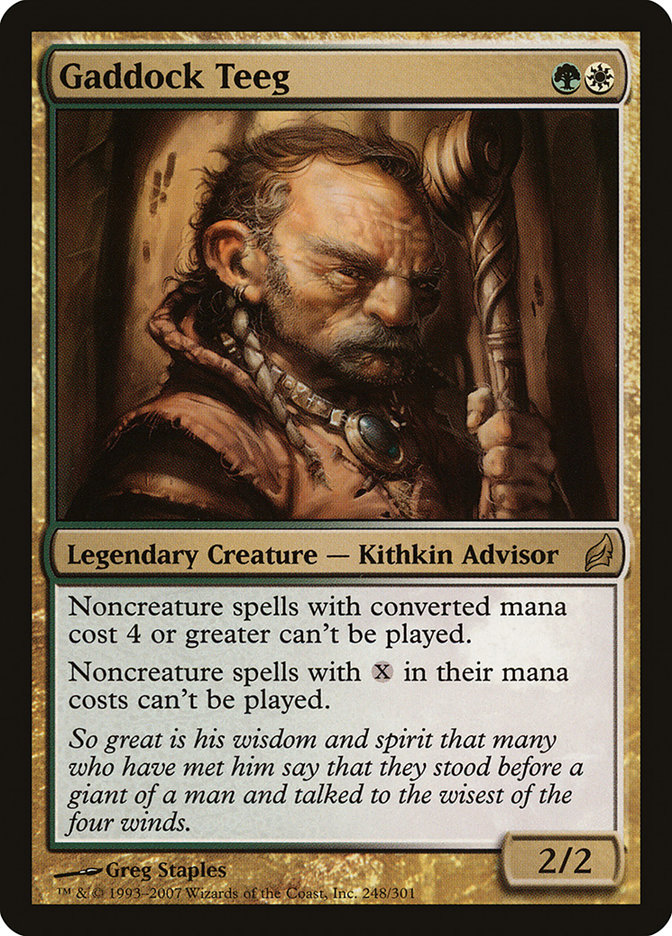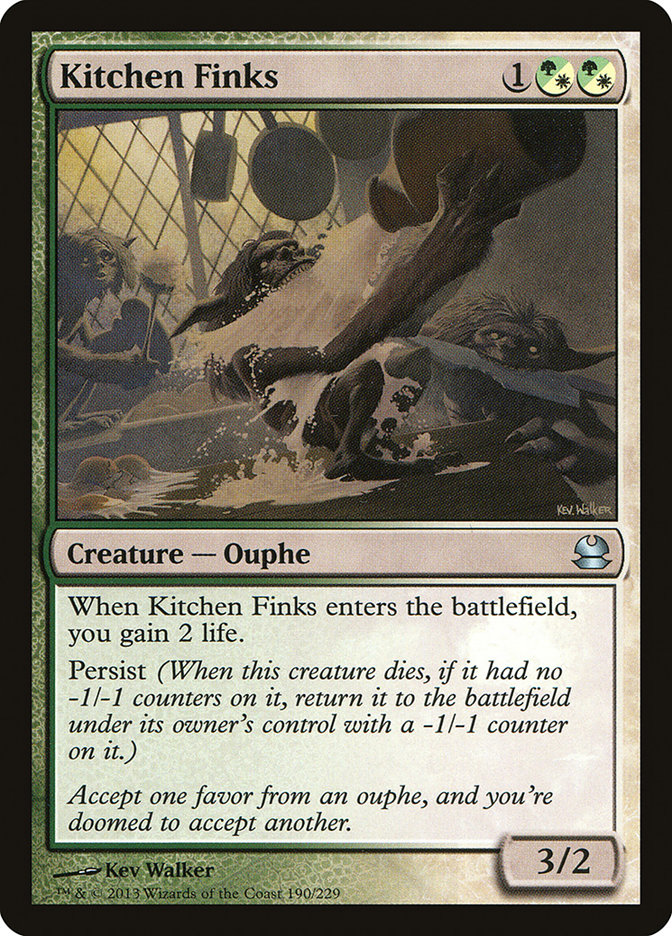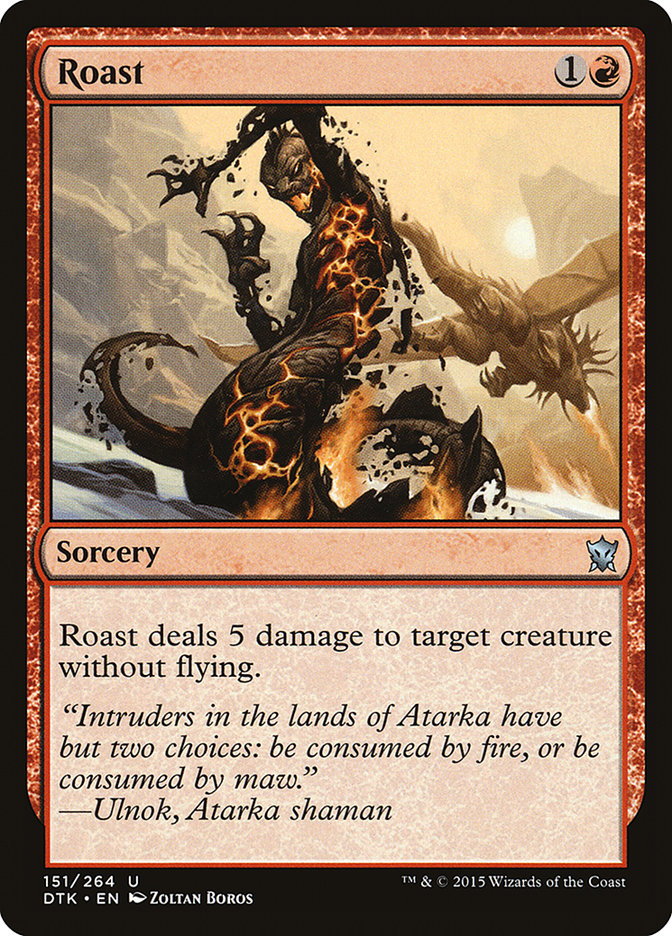Even though I have a well-deserved reputation as a fan of aggressive red strategies, I’ve never been a big fan of Burn in Modern. In Legacy, I feel like the deck is attacking the format from a different angle—essentially a combo deck that doesn’t care that much about Force of Will. Many players aren’t prepared for your approach, either in the maindeck or sideboard, and the deck has random high-powered standouts like Fireblast and Price of Progress for some free wins. Over the last few years in Standard, the aggressive red cards have been close in power to the other stuff going on, as many Pro Tour, Grand Prix, and SCG Tour® wins demonstrate. Burn in Modern has felt like the worst of both worlds—a noticeable power deficit against many of your opponents while also being an expected strategy. The deck is clearly good enough to be competitive, but I didn’t feel like I had an appreciable advantage playing it.
My dissatisfaction with Burn caused me to work on a Zoo list about six months ago. Once the initial legwork was done, the list hasn’t deviated, save for a few sideboard cards flavored to metagame shifts.
Creatures (22)
- 4 Kird Ape
- 2 Grim Lavamancer
- 4 Wild Nacatl
- 4 Goblin Guide
- 4 Eidolon of the Great Revel
- 4 Monastery Swiftspear
Lands (20)
Spells (18)
Sideboard

In the hands of others, this deck has posted some Top 8 performances in IQ and RPTQ events. My coverage partner, Cedric Phillips, got a couple of wins against stiff competition in the Modern Super League a while back, and Tom Ross selected it as his weapon of choice for the 2015 Players’ Championship (though he did not have a good run with it). In light of recent bannings, it is worth looking at peripheral strategies such as this and trying to figure out where they may land in the new world. Before delving into that, one should try to understand the rationalization for the deck in the first place.
Why Zoo?
Zoo is swimming in the same pond with Burn, Infect, Affinity, and a variety of other decks—strategies that try to win on the third or fourth turn through creature combat. I think this Zoo deck kills less frequently on turn 3 than Infect, but more often than either Burn or Affinity. I don’t think the turn 3 win rate is an especially big driver for deck selection, especially now since two decks that demanded a high turn 3 win rate (Amulet Bloom and Twin) are either gone or slowed down/weakened.
The first big incentive is the redundancy. You come equipped with eighteen one-mana creatures along with four Eidolon of the Great Revels, so your starts are a lot more consistent than Infect, which needs an infect creature, or Affinity, which needs one of its few payoff cards to make its draw amount to much. Because of the redundancy and the interchangeability of your threats, you are also more equipped to beat an early removal spell than either aforementioned deck. Similarly, a single Inquisition Of Kozelik or Thoughtseize is rarely enough to break up your draw. Any creature is good enough to get the ball rolling, and you’ve got plenty of creatures to weather early removal.
Next is sideboarding, and this cuts both ways in favor of Zoo in comparison to other similar-appearing options. In post-board games, most Affinity opponents have to slog through Ancient Grudge; Stony Silence; Kataki, War’s Wage; and other nightmares. Even though there isn’t quite the same degree of hate for Infect, pilots have to anticipate powering through some mixture of better blockers, cheaper removal spells, and precise counters in games 2 and 3. Burn has to try to beat lifegain, anti-spell discard, and random haymakers like Kor Firewalker and Leyline of Sanctity.
There isn’t an analog to these cards for Zoo (Engineered Explosives and Anger of the Gods are the closest), and they show up in lower frequency, and are more beatable, than the most detrimental sideboard options against the other decks.
Being a redundant, creature-based deck affords you an edge when you sideboard, however. One may notice my sideboard being full of creature removal; that is a luxury that the other decks can’t afford. For Affinity and Infect, the colors of the deck preclude them from boarding much removal, and besides, the decks rely on a critical mass of certain effects, meaning they have to sideboard light regardless. The same issue harms Burn, and one will notice that most Burn decks don’t even have the full four Path to Exile in their board.
When one is trying to kill someone with a bunch of Lava Spikes, it doesn’t leave a lot of room for cards that don’t deal damage. These decks are forced to present their same linear plan with some light interaction (at best), leaving them at the mercy of how much hate their opponent is bringing to the table.
This Zoo deck is fully capable of boarding in lots of efficient interaction that doesn’t necessarily have to fit in to any linear plan, which is a powerful option not afforded to the other decks.
Card Selection
This is the most efficient set of cheap creatures available to someone in the Naya colors. Kird Ape is the lowest-powered of the bunch, but it’s the next-best option after the obvious ones and the deck is heavy enough on two-drops that something more expensive is off the table.
Much is made of three toughness being an important flashpoint in Modern because of Lightning Bolt, but two-toughness threats are a liability for attacking decks. Pyroclasm immediately jumps to mind, but the toll of Snapcaster Mage rises when it can block and trade. Goblin Guide is too powerful not to play, and Eidolon of the Great Revel and Grim Lavamancer are plenty productive outside of combat. The rest of the creatures brawl with Snapcaster Mage effectively, and ameliorating the impact of that card is a huge part of beating all sorts of blue decks.
Another incentive to play a creature-heavy red deck is boosting the power of Atarka’s Command. In traditional Burn, it’s “Skullcrack, maybe a little upside,” but here it is an entirely different animal. Many games involve blowing up combat while an opponent is scrambling to block or dealing six or more damage when your board is uncontested. Burn decks just aren’t leveraging the card on the same level.
Boros Charm is an efficient Lava Spike and this deck is in the market to protect its creatures from sweepers with the indestructible mode. Even double strike comes up in sequences involving Mutagenic Growth. Four Charms and Commands, along with four Lighting Bolts, is a no-brainer.
The two Searing Blazes and Lightning Helixes are part of making other creature matchups palatable. You deal a lot of damage to yourself from your lands, and sometimes you struggle against early flyers since you lack flyers of your own. Searing Blaze is the more powerful of the two but the card has more pronounced diminishing returns (it becomes harder to enable landfall, and in some matchups it’s dead), and Lightning Helix helps against Burn in a unique way.
Mutagenic Growth is the oddest of the bunch, but I like playing a small number. Many of your opponents can’t hang with your speed and efficiency unless they draw Lightning Bolt, and Mutagenic Growth makes even that irrelevant. It can help punch through early troublesome blockers, especially Tarmogoyf. Last, the deck’s curve is a bit high given the deck’s goals and the speed of Modern, and I put a huge premium on just getting everything out of my hand. Replacing it with even a one-mana card makes me apprehensive.
The most obvious exclusions are the traditional Burn cards like Lava Spike and Rift Bolt. Rift Bolt is well below the bar for me (turn delay, doesn’t play well with Swiftspear, Spellskite is a card, etc.), and Lava Spike seems worse than any of the creatures or anything that synergizes with a creature, like Mutagenic Growth. Keeping the deck sorcery-free is a small benefit against Tarmogoyf as well.
For a while I was on thirteen fetchlands and three Stomping Ground, but it is so important to open on both shocklands that I wanted to have the maximum number of fetchlands. I found myself occasionally needing the third Sacred Foundry because of all the Path to Exiles in the board, and going down to one Stomping Ground can open up random losses to Fulminator Mage and the like. The one Mountain is easily the worst card in the deck and has the highest correlation with mulligans of any card, but the need to fetch for one damage and cards like Ghost Quarter and Path to Exile warrant a single basic land.
Sideboard
I would not register this deck without four Path to Exile, three Destructive Revelry, and two Gaddock Teeg.
After that, everything is up in the air. Path to Exile is the best option against both fast creature decks and decks trying to beat you with a singular threat, like G/R Tron with Wurmcoil Engine. The three Destructive Revelries come in all over the place, from Affinity to Lantern to Ad Nauseam. One could play a fourth copy, but don’t do it for Affinity; as stated before, the deck is heavy on two-drops, and Affinity clobbers your clunky draws, especially when you’re on the draw. That’s part of the desire for Gut Shot, along with the Infect matchup. Gaddock Teeg is a catch-all against all sorts of problematic cards, from Supreme Verdict to Collected Company, from Ad Nauseam to Past in Flames. Sometimes it just dies, but the same is true of everything else, and the ceiling is enormous in the right matchups.
Roast is a nice option to have against Tasigur, the Golden Fang; Tarmogoyf; and other creatures when Pathing your opponent early represents a huge cost. Since many Grixis decks are trying to set up either Tasigur or Gurmag Angler with Dispel backup (to play back against Path to Exile), Roast can plug in some gaps that other removal spells can’t. Rending Volley was primarily for Twin and probably doesn’t warrant inclusion at this time.
Sequencing
Lead with your non-haste creatures before your haste creatures unless you think the game is likely to end before you cast everything (either in actuality, like against combo, or in practice, like against G/R Tron).
Deploy Grim Lavamancer early in creature matchups. If there isn’t a pressing need, err on playing it earlier if your hand is land-heavy and later if your hand is land-light. Keep in mind the implications of Snapcaster Mage at all times in the appropriate matchup. This deck is straightforward without a particularly high skill cap, so this should become intuitive with enough practice.
Sideboarding Out
I strongly dislike firm sideboarding guides; the context of a matchup can change a lot based on specific cards. I prefer to think of the deck in terms of blocks of cards, which are usually where I make my cuts, based on the broad-strokes nature of the game.
These are the cards dedicated to giving you enough punch against creature decks. Playing against G/R Tron or U/W Control? Give them the boot.
These are cards dedicated to raw speed. When the game is going to be a grind on the battlefield, like Jund or Abzan, cut some of this stuff for the right creature removal.
These are cards that can underperform when you’re forced to become a control deck, which happens in a lot of tribal matchups, plus Affinity and Infect. These cards aren’t awful across the board—Eidolon is a killer against Infect, and Atarka’s Command pulls a little weight against Affinity because reach frequently comes up. It is worth giving Eidolon a look when you’re on the play, but it’s wretched against Affinity and has been bad more often than good for me against decks like Elves and Merfolk.
Issues, Previous and Going Forward
I’ve been singing the praises of Zoo in contrast to some of the other attacking decks of the format, but it comes with its own weaknesses, too. You lack the evasion of Infect, the high-ceiling cards of Affinity, and the reach of Burn. You are trying to do a lot of your work in combat, on the ground. What this means is nearly every opponent has some measure of baseline interaction with you. Tarmogoyf matters to you more than the other decks in question; even Wall of Omens is a mess. One of the worst cards you can play against is Kitchen Finks, which is barely a card against Infect and Affinity and good but not great against Burn. I think you can plenty of tradeoffs in the other direction, but it is worth noting these issues.
The bannings don’t move the dial much in either direction in the abstract. Both Twin and Amulet Bloom were close matchups. You couldn’t do much about their best draws, but they had to have them because you threaten to kill so quickly without meaningful disruption. In the postboard games, you picked up high-value cards. If nothing else, freeing up the Rending Volleys for other cards should tilt things in a better direction for Zoo.
I don’t think it’s that simple. I think the format may become more hospitable to midrange plays that impact the board. Many of these cards are nonsense against the banned decks, but now that’s not a concern. Restoration Angel; Collected Company; Elspeth, Knight-Errant; Wilt-Leaf Liege — I think cards like these could find warmer waters in the new metagame. Cards that gum up the works and provide value on the battlefield are potent against you, and to make matters worse, they often appear in decks alongside Kitchen Finks.
The other possible issue is the various shades of Eldrazi. The deck was already showing up prior to Oath of the Gatewatch, and cards like Wasteland Strangler and Blight Herder are a lot to work through. If these decks can fill out with Matter Reshaper and Thought-Knot Seer, so much the worse. This is speculation, but if some deck like this is popular, I would suggest shelving Zoo for a different aggressive option if that’s the direction you want to go.
Final Thoughts
I will be playing the following deck in #SCGRegionals this weekend, with possibly a few sideboard cards changing on what appears at #PTOGW.
Creatures (22)
- 4 Kird Ape
- 2 Grim Lavamancer
- 4 Wild Nacatl
- 4 Goblin Guide
- 4 Eidolon of the Great Revel
- 4 Monastery Swiftspear
Lands (20)
Spells (18)
Sideboard

Not a lot has changed, as you can see. The Rending Volleys are extraneous for the time being, and I want another Roast for decks like Grixis and Jund. Rest in Peace does some work against Grixis while also assisting against some of the fringe graveyard-centric combo decks.
Modern is a format with a lot of uncertainty due to the bannings, and the large events of this weekend will shape the format going forward. If large midrange plays end up being the breakout stars of the new Modern, Zoo should probably stay on the sidelines. But the deck matches up well against most of the format’s old players (especially Infect and G/R Tron), and if the format looks roughly the same minus the decks absent because of bannings, Zoo will remain my Modern choice for the foreseeable future.


